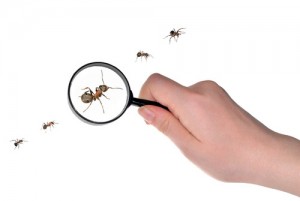Natural vs. Synthesized and Organic vs. Botanical
By Chris Williams on February 8, 2013.
Words mean things. Words misused, confuse. Nowhere is this truer than when it comes to a discussion of pesticides. Some may be natural, but not organic, organic, but not natural, and some may be both!

Natural vs. synthesized and organic vs. botanical
First, I’ll look at the ‘organic‘ pesticide from my frame of reference. As part of my entomology training, I learned a lot about insecticides use and their history. Up until the 30’s and 40’s most chemical control strategies for insects involve the use of inorganic compounds. Lead arsenate was commonly used to control fruit orchard pests. Sodium fluoride (NaF) was widely used for cockroach control and it was still around when I entered the pest control industry in the early 80’s. It was good stuff and I used a lot of it! Advances in organic chemistry around the time of WWII brought about the discovery of many different classes of new insecticides. Organochlorines like DDT and chlordane were followed by organic phosphates like malathion and diazinon and then carbamate insecticides like carbaryl (Sevin). Later during the 60’s and 70’s came the pyrethroid class of insecticides, which mimic the naturally occurring plant derived insecticide pyrethrum. All these materials are ‘organic‘ carbon containing molecules synthesized in a lab.
Even prior to the synthetic pesticide revolution there were naturally occurring chemicals derived from plants used to control insects. Some of these ‘botanical‘ insecticides like pyrethrum, nicotine, and rotenone have indeed been used for centuries. The botanical insecticides fall into both categories being natural and organic (because they contain carbon). The insecticidal properties of pyrethrin and nicotine are the basis for nearly all of the synthetic professional-use only products and ready to use insecticides available to the public today. In recent years, many new botanical compounds with insecticidal and fungicidal properties have been discovered. Essential oils (mint, clove, and other herbs), extracts from citrus and chili peppers and neem oil have been a boon to the backyard organic gardener for insect control, but not too many of these products have made their way into my industry. One exciting new class of chemistry that has made it to the structural pest control industry is chlorantraniliprole, the active ingredient in DuPont’s new termiticide Altriset. This new active was isolated from the plant genera Ryania and is completely non-toxic.
Not all of the newly discovered natural compounds with insecticidal activity are plant derived. Another recent discovery are the spinosads, which have been isolated form a soil borne microbe Saccharopolysora spinosa. Several commercially available products (Conserve SC) are now on the market with this new active for both the professional and backyard grower. The original ‘biopesticides‘ like milky spore disease (Paenibacillus popilliae) for lawn grub control and all the various strains of BT (Bacillus thuringiensis) have been around for years and continue to be a ‘safer‘ alternative for backyard or certified organic growers. Lastly, some natural ‘inorganic‘ materials are enjoying resurgence in popularity. After sodium fluoride dust went a way for cockroach control boric acid dust took over. (Remember those Paul Harvey radio spots for ‘Roach Prufe‘?) Boric acid only works by ingestion and so its’ most commonly found in baits for household insects. Another natural insecticide is diatomaceous earth. Its’ active ingredient is silicon dioxide which kills by abrading away the insect’s waxy cuticle causing desiccation. Amorphous silica gel (those little packets that often come with electronics) is a modified form of silicon dioxide that acts to absorb moisture. My favorite insecticide dust when I first started in the pest control industry was a product called Drione dust. This combination of silica gel plus natural pyrethrin is still around and was my go to tool for carpenter ant control ‘back in the day’. If you were confused before, I hope that clears things up!